Flat mirrors – Who can see whom – People in a line
You may be asked in an exam who can see whom in a line of people in front of a mirror. If A, B, C, D, E and F represent people standing looking at the mirror, would person F see person A?

To work out who can see whom, just apply the laws of reflection from each person's perspective to each of the others'.
The first stage is to draw an image on the other side of the mirror perpendicular (at 90°) to the mirror.
Behind the mirror
Equal distance
Same size

We end up with a diagram as follows:
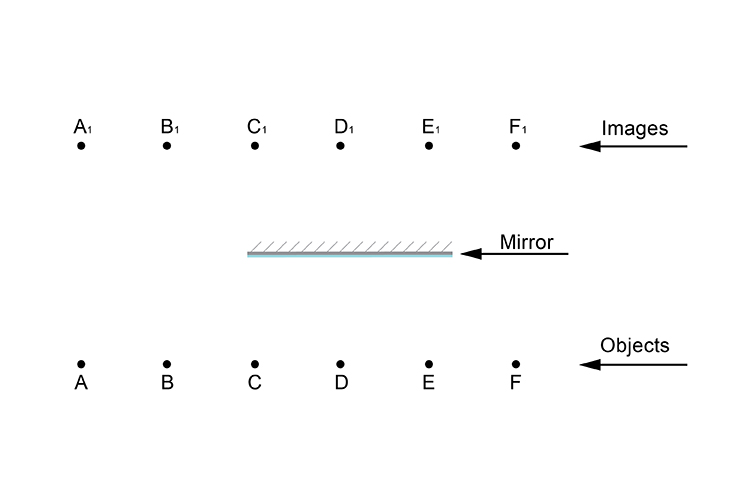
The second stage is to draw rays to person A from each of the other images of people.
We can also complete the third stage by joining the light rays from the mirror to the other people as follows:
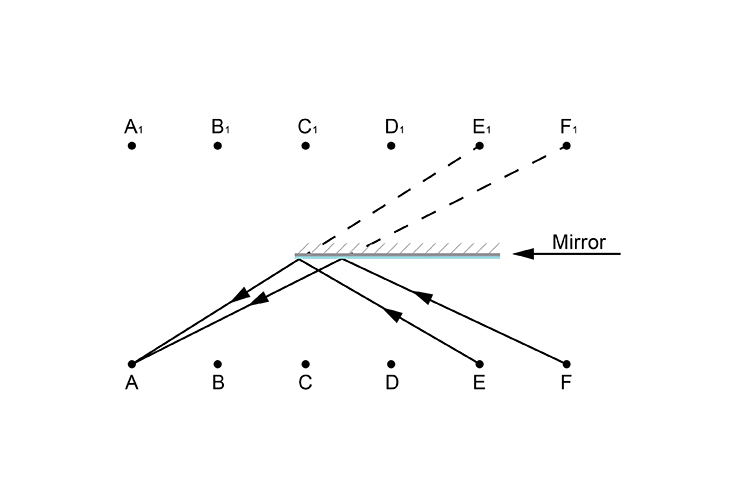
Here we can see that person A can only see the people E and F and can not see the people B, C and D.
We can now repeat this for person B.
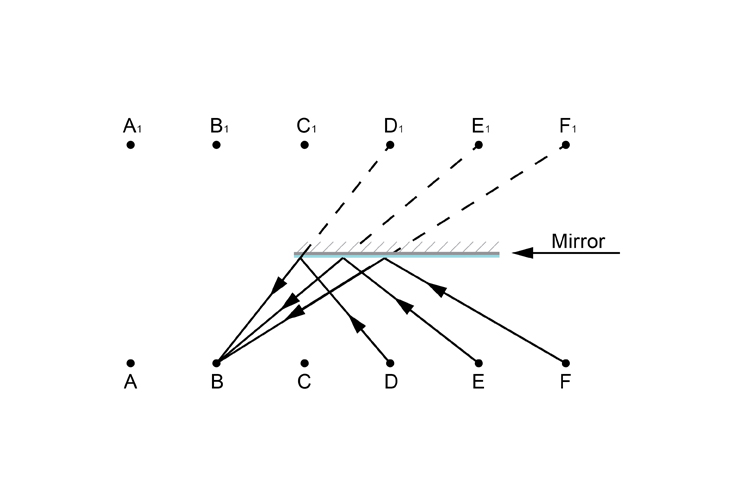
Here we can see that person B can only see D, E and F.
Now let's try person C.
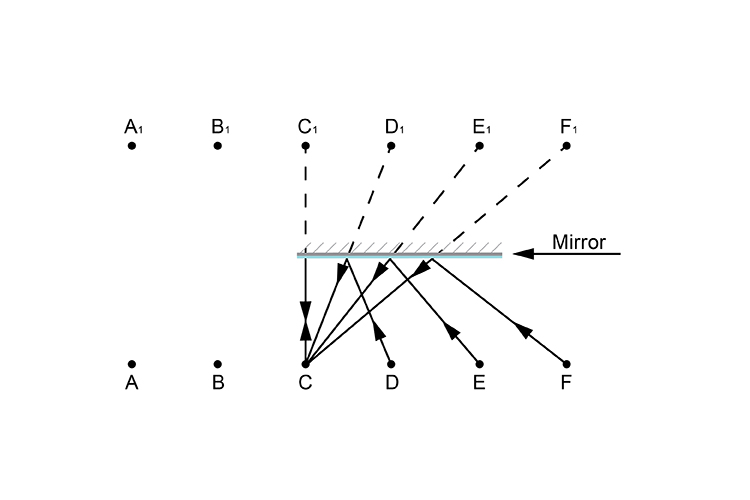
Person C can see themselves and persons D, E and F.
What can person D see?

Person D can see person C, themselves and persons E and F.
Let's try person E:
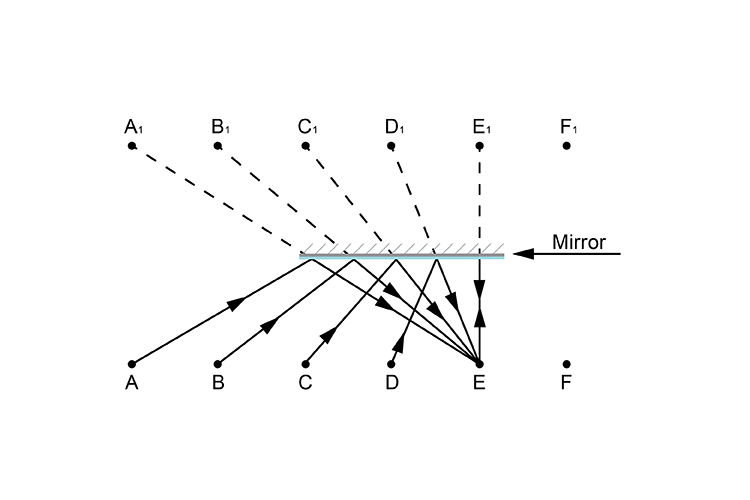
Person E can see themselves and persons D, C, B and A.
Finally, who can person F see?:

The final person F can see persons A, B, C and D.
Summary
| Person | Can see | ||
| A | E and F | ||
| B | D, E, F | ||
| C | D, E, F and themselves | ||
| D | C, E, F and themselves | ||
| E | A, B, C, D and themselves | ||
| F | A, B, C, D |
Therefore, in answer to the original question, person F would see person A.




